








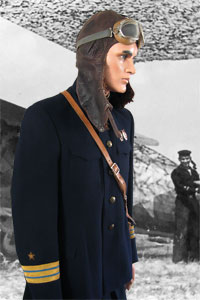
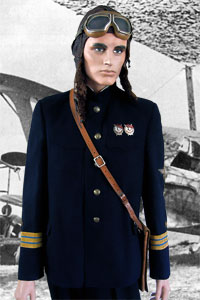

During the early years of conflict, the Soviet Naval air forces were land based forces operating close to traditional sea bases, mainly the Baltic and Black seas. They were involved in active flight operations in coordination with the VVS against the Finns and then the Germans.
The naval captain is pictured in the style of naval uniform according the regulations that went in to effect in 1935 and was worn until 1943. The uniform was a traditional high collar Russian tunic with traditional naval rank lace on the cuffs. Branch of service was indicated by color 'lights' between the lace. For aviation, the color was sky blue.
Active pilots from 1935 until 1943 were entitled to wear a winged badge on the left sleeve. The badge was the same as the VVS with winged propeller, surmounted by a red star and crossed swords in the case of military aviators and crossed hammer and wrench in the case of flight engineers.
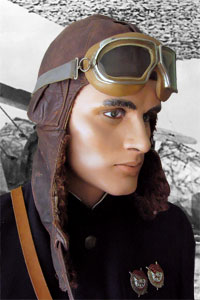
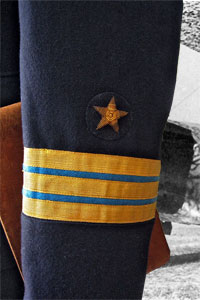
Most Soviet flight gear lagged in terms of development relative to other air forces and didn't catch up until planes and equipment were modernized until late in the war. Here the naval pilot is wearing a fur lined flight cap and goggles for the exposed cockpit of his I-153 in the background, circa summer 1941. Soviet aviators usually wore service dress in flight. In the background is a midshipman.
This close up of the sleeve shows how beautifully preserved the rank lace and star embroidery are. The star was for line officers. Political officers would have a red star in its place.
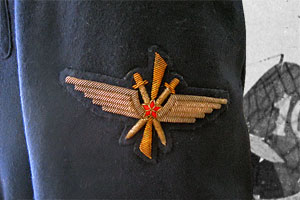
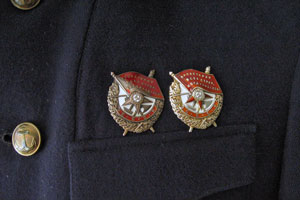
The fantastic embroidered soviet flight patch is unique amongst air forces. The hand embroidered metal thread is highly detailed and the wings have a strong Deco design.
The two awards worn by this officer are Orders of the Red Banner. They are of an early screw back design which was later converted to a ribbon suspension. Note that the officer buttons from this period were simple anchors.